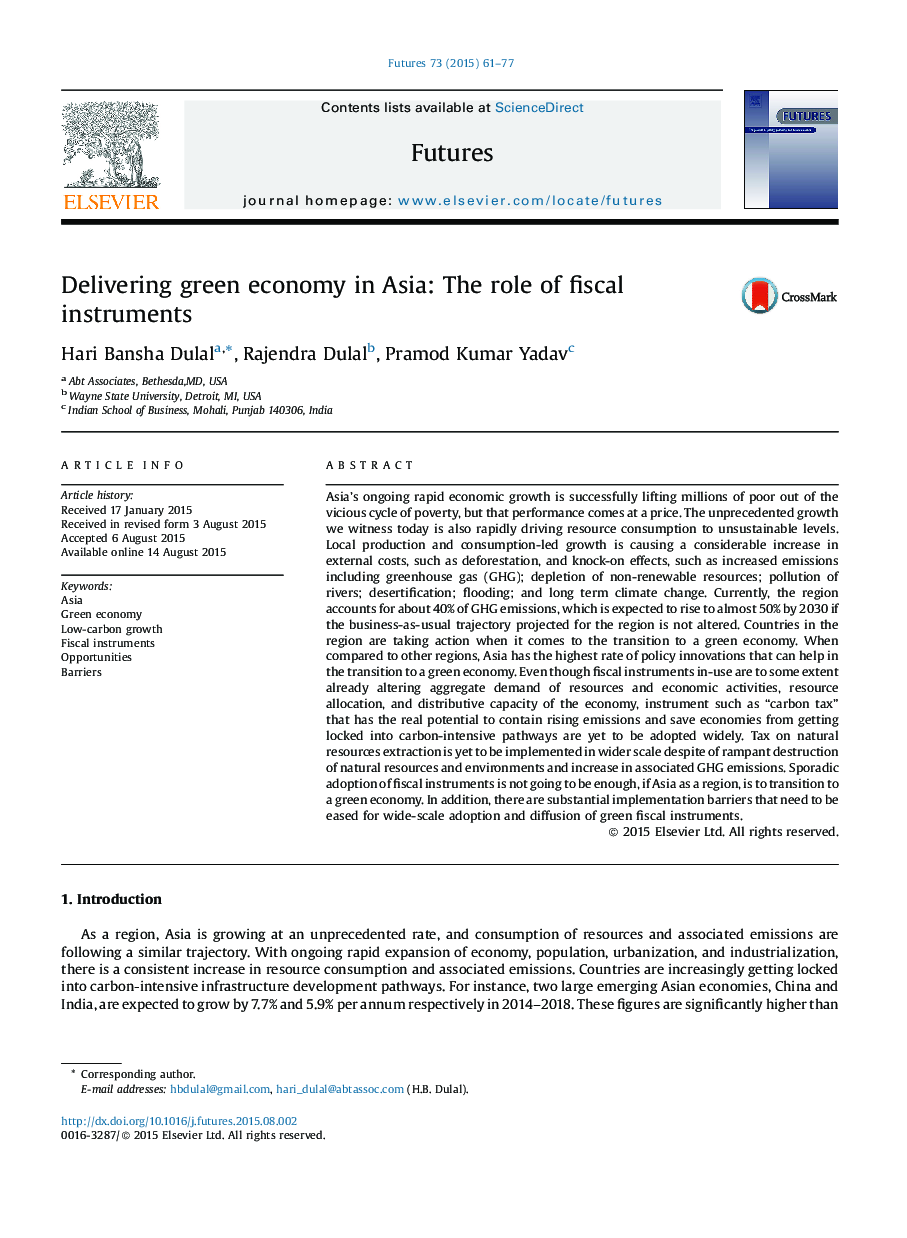| Article ID | Journal | Published Year | Pages | File Type |
|---|---|---|---|---|
| 1015426 | Futures | 2015 | 17 Pages |
•We explore the role of fiscal instruments in transition to a green economy.•Identify countries that have adopted fiscal policy instruments.•Evaluate effectiveness of adopted fiscal policy instruments.•Identify opportunities and barriers towards adoption of fiscal instruments.
Asia’s ongoing rapid economic growth is successfully lifting millions of poor out of the vicious cycle of poverty, but that performance comes at a price. The unprecedented growth we witness today is also rapidly driving resource consumption to unsustainable levels. Local production and consumption-led growth is causing a considerable increase in external costs, such as deforestation, and knock-on effects, such as increased emissions including greenhouse gas (GHG); depletion of non-renewable resources; pollution of rivers; desertification; flooding; and long term climate change. Currently, the region accounts for about 40% of GHG emissions, which is expected to rise to almost 50% by 2030 if the business-as-usual trajectory projected for the region is not altered. Countries in the region are taking action when it comes to the transition to a green economy. When compared to other regions, Asia has the highest rate of policy innovations that can help in the transition to a green economy. Even though fiscal instruments in-use are to some extent already altering aggregate demand of resources and economic activities, resource allocation, and distributive capacity of the economy, instrument such as “carbon tax” that has the real potential to contain rising emissions and save economies from getting locked into carbon-intensive pathways are yet to be adopted widely. Tax on natural resources extraction is yet to be implemented in wider scale despite of rampant destruction of natural resources and environments and increase in associated GHG emissions. Sporadic adoption of fiscal instruments is not going to be enough, if Asia as a region, is to transition to a green economy. In addition, there are substantial implementation barriers that need to be eased for wide-scale adoption and diffusion of green fiscal instruments.
